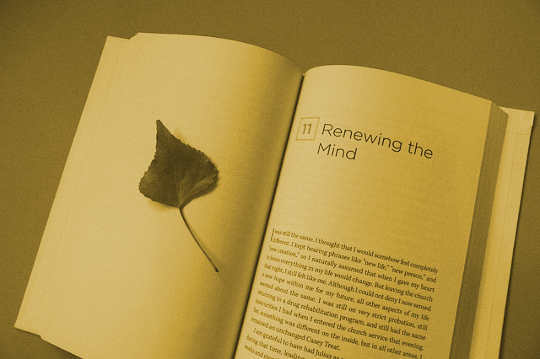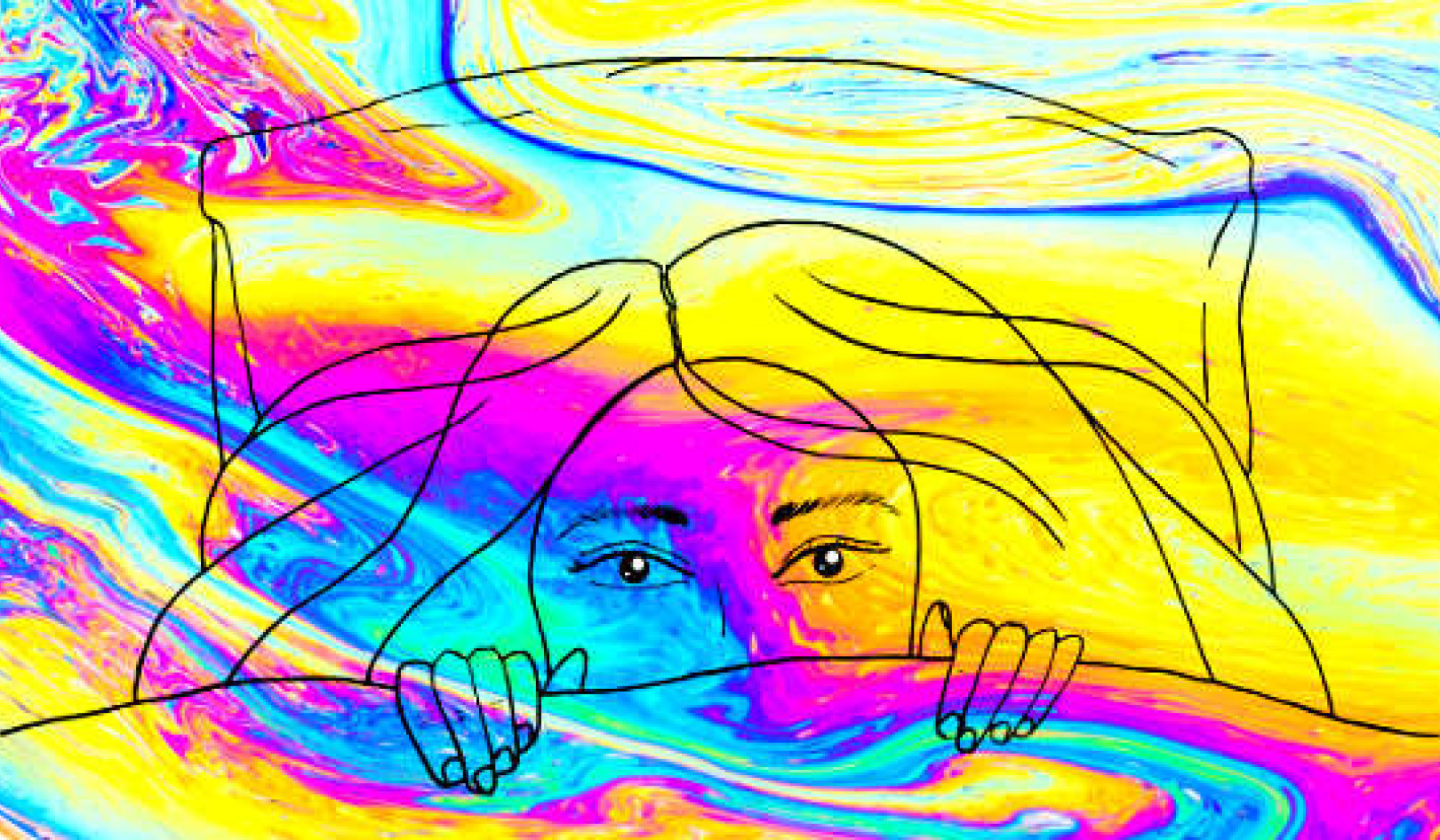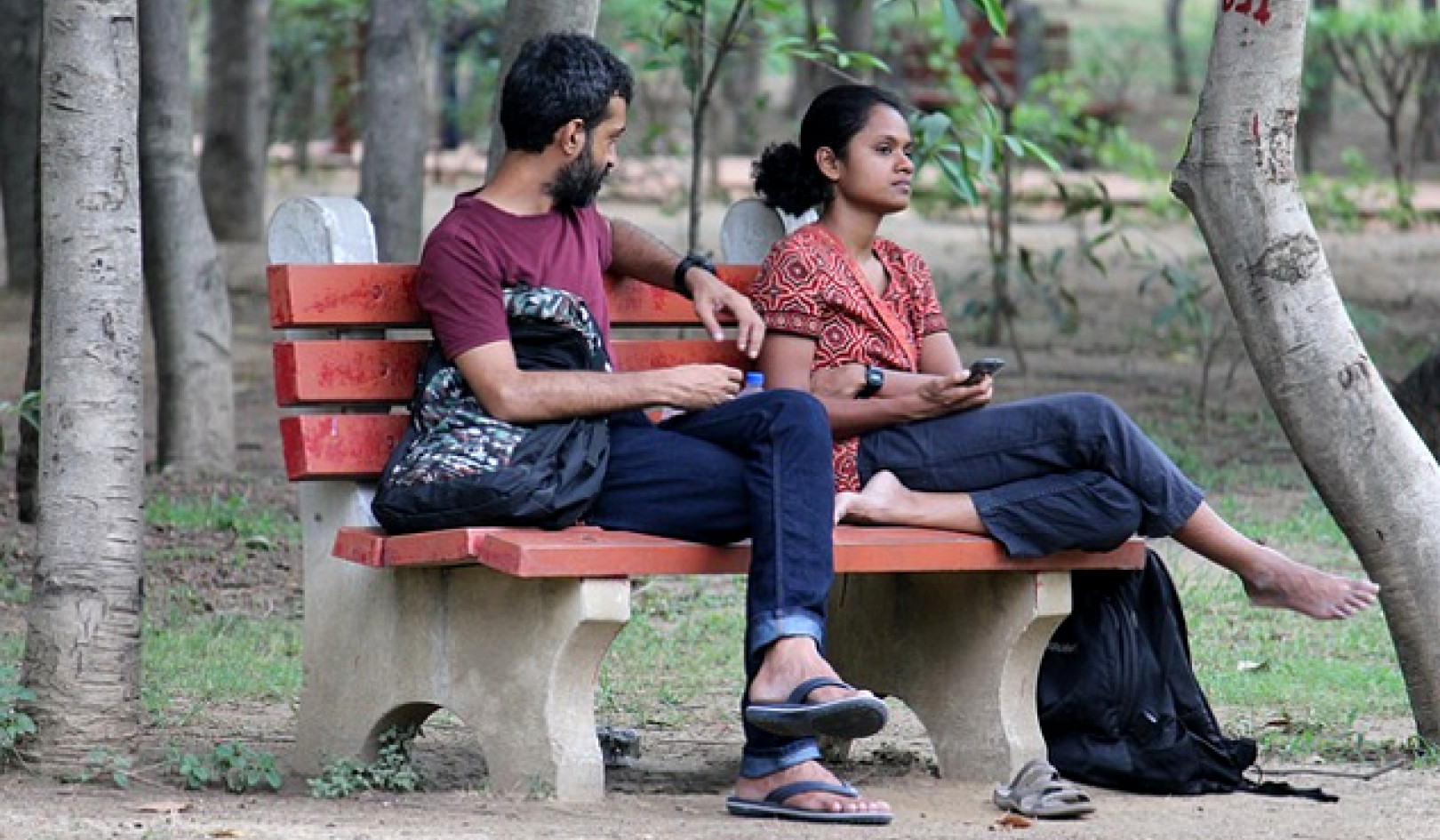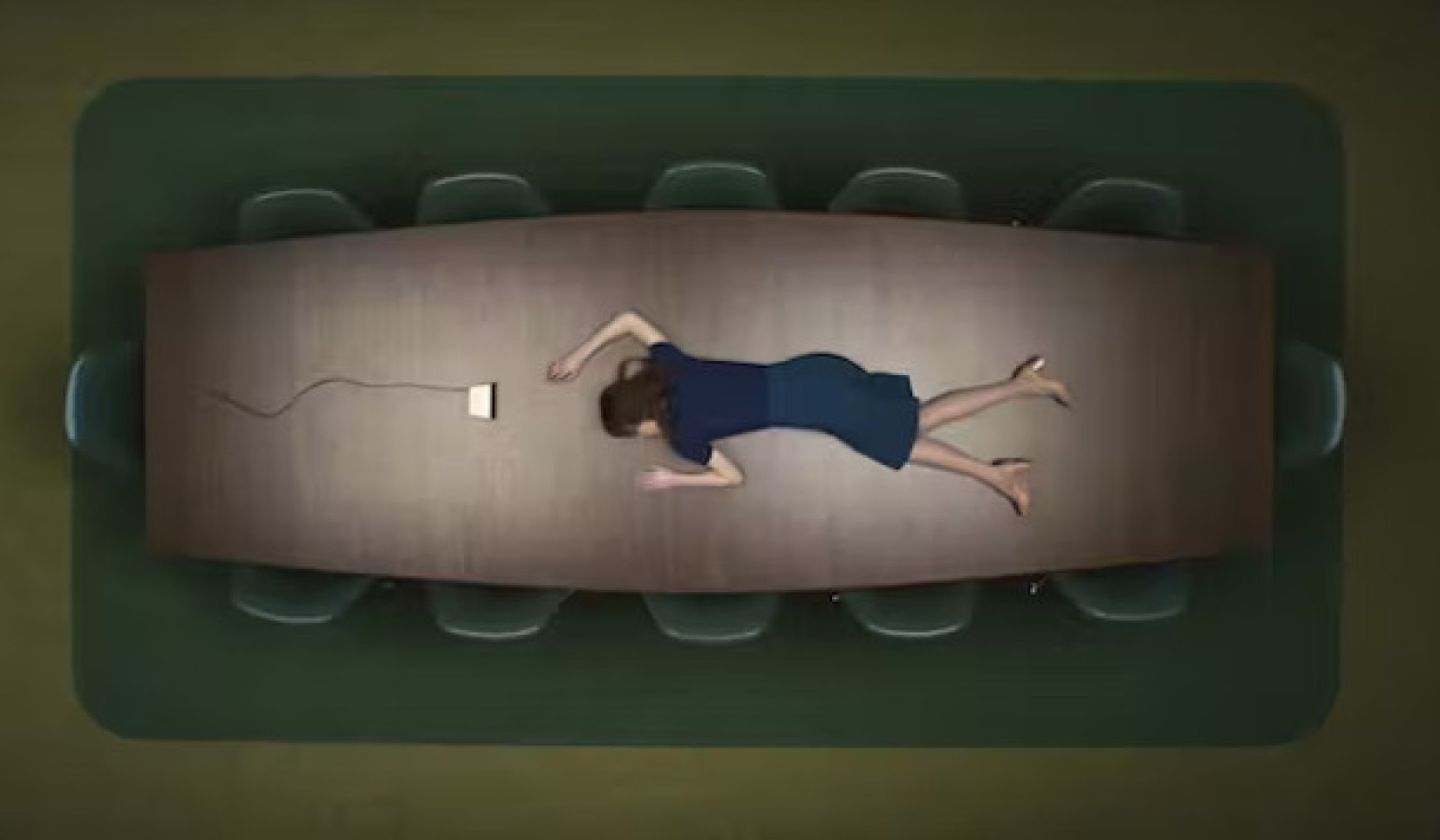
What is the difference between experience and observation? As you are reading this sentence you are experiencing something physical that it is unlikely you are also observing. After the colon in this sentence you will be observing it: sensation in the sole of your left foot.
What happened when you read that last phrase? What happened is the first step of the scientific method and of Cognitive Behavioral Therapy (CBT). Instead of simply being your experience you became an observer of it.
All day every day we experience things: physical sensations, emotions, and thought patterns. Most of our experience we fail to observe. While having an experience we don’t notice it. While this is well and good when it comes to sensation in our feet or many other aspects of living, failure to observe certain parts of our physical, emotional, and cognitive experience can contribute to the development and maintenance of symptoms associated with PTSD.
Thoughts At The Root Of Negative Emotions
A patient named Diana was merging onto an interstate when an eighteen-wheeler abruptly changed lanes, pinning her compact car against a concrete retaining wall. Diana survived the shower of sparks and breaking glass without serious physical injury but shortly thereafter began feeling panicked when she approached interstate on-ramps.
We accompanied her on a drive and saw that, unbeknownst to her, a half-mile before the interstate Diana’s respiration changed. She began breathing more shallowly and quickly, a behavior that removes more carbon dioxide from the blood than usual. This raised her blood’s alkalinity, causing Diana to feel dizzy. Her heart began to palpitate and her hands to tingle. By the time she’d arrived at the on-ramp she’d primed herself to have a full-blown panic attack.
Another patient, Matías, had lost his younger sister to suicide fifteen years earlier. Matías felt angry and depressed. His sister had died over the Christmas holidays and each year this was a particularly difficult time for Matías. As he himself had a good life, a loving wife, and a job he liked, Matías believed he had no reason to be unhappy. “Perhaps it’s a brain imbalance,” he told himself, and tried antidepressant medication. It didn’t help. Then Matías read about PTSD and came to us for an evaluation.
We asked Matías to tell us about the content of his thinking. At first he didn’t know what we meant, so we explained to him the concept of metacognition and asked him to begin observing and writing down his thoughts.
This was a new idea for Matías. While he’d experienced thinking his entire life, he’d never removed himself from it enough to observe it. When he did so he was shocked by what he saw. All day every day, just below the level of conscious awareness, he was telling himself I should have known Maria was so desperate. I shouldn’t have left her alone that weekend. She always looked to me for protection. It’s my fault she died.
Like many of our patients, Matías was aware of his negative emotion but not the thinking that was producing it. Bringing this cognition into awareness was the first step in his coming to terms with his sister’s death and freeing himself from the chronic feelings of anger and depression he had lived with for so many years.
Discovering The Cause Of Emotional Numbness
Sometimes emotion itself is what goes missing. Lei, a successful business professional, came to us complaining of failed relationships with men and general feelings of numbness. She described a traumatic childhood in which her parents demanded perfection from her, then beat her when (in their eyes) she fell short.
Since leaving home Lei had done extraordinarily well in school and in her professional life. She continued to live close to her parents who, aging now, increasingly looked to her for assistance.
We offered Lei uncovering tools that led her down through her emotional numbness to a blind rage that lay beneath it. Lei was tremendously angry at both her parents, but because her culture placed a premium on respect for one’s elders—and as Lei herself continued to value being “the perfect daughter”—she’d struck a bargain with herself not to observe this emotion.
When she became angry with a man she was dating she struck the same deal. The end result was the chronic numbness and unsatisfying relational life that brought Lei to us for treatment.
Avoidance As A Way Of Dealing With Trauma
After Mark was caught in the crossfire of two rival gangs downtown he began avoiding leaving his suburban home in the evenings. From one point of view this behavior makes perfect sense. Avoidance is so common after trauma that it is one of the criteria necessary for a diagnosis of PTSD. But for Mark this healthy instinct to protect himself became a snowballing problem of its own.
Eventually Mark confined his public outings to the short drive between his home and office. When this outing too began feeling scary—as did answering the doorbell and even the phone—he reached out to us for help.
We gave Mark a small digital counter like the ones golfers wear on their wrists. We asked him to click it whenever he found himself avoiding exposure to the wider world, and then write his daily total for these behaviors on a log sheet. Along with the cognitive tools we offered Mark, observing, measuring, and recording his actual behavior on a daily basis became an important part of his therapy.
Experiment is The Axle Of All Science and of Life
Designing and implementing a protocol and collecting data that supports or refutes a hypothesis is where scientific rubber meets the road. Human beings are inherently experimental. As children we are mad scientists constantly running experiments—doing things and seeing what happens. In scientific terms we manipulate an independent variable (do something) and then measure the response of a dependent variable (see what happens).
When trauma crashes into our lives it can shut down our personal laboratories. We can lose our curiosity about things, or tell ourselves the data is all in for this lifetime. We lose our willingness to “do something” and our interest in “seeing what happens.” Leaving behind our mad scientist we leave behind much that enlivens us and makes us prone to curiosity, joy, surprise, and an ever-deepening experience of life on earth.
The fact that you are reading these words suggests that while your mad scientist may have taken a long sabbatical, he or she is still willing to don a lab coat and collect some new data. Good for you!
The willingness of thousands of trauma survivors we’ve helped heal has been the active ingredient in their recoveries. In scientific language willingness is the “catalyst” that activates the process of change. Without it there is only a low probability of healing. With it anything can happen, and regularly does.
So—let’s roll up our sleeves and do some science!
Experiment I
Step One: Get your lab book, date this entry, and sit in a comfortable chair. Close your eyes and imagine yourself in some very pleasant place. Perhaps you’re at the beach on a summer day. Hear the seagulls calling and the waves rolling into shore. Or maybe you’re sitting by a crackling fire in a mountain cabin in the snowy woods. Smell the wood smoke and feel the soft down comforter against your skin. After a minute or so rate how peaceful you are on a scale of 0 to 10. Here “0” would be not at all peaceful; “10” would be Dalai Lama levels of peace and equanimity. Rate also how relaxed you are physically, using the same scale. Open your eyes and write those two numbers in your lab book.
Step Two: Again close your eyes and now imagine yourself in some moderately stressful scene. Perhaps you’re having an argument with a friend or family member. Or maybe you’re stuck in traffic on a hot day, your car’s air conditioner is broken, and you’re running late for an important meeting. Hear the car horns, smell the exhaust, notice the engine temperature needle on your dashboard moving into red. After a minute or so, again rate how peaceful you are on a scale of 0 to 10. Also note how relaxed you are and write these numbers below the first set.
Congratulations! You’ve just conducted your first experiment. You manipulated an independent variable—your thought pattern—and collected data on two dependent variables—feelings of peacefulness and of physical relaxation. Let’s now analyze the data. Are your two sets of numbers the same? Different? If different, how so?
What We Tell Ourselves Creates Emotions
Most of us find our first peacefulness and relaxation numbers higher than our second. How might we account for this difference, called variance in scientific language? Epictetus, the Greek Stoic, proposed a hypothesis: it’s not what happens to us (sitting in a comfortable chair) but our “views and opinions” (we’re at the beach; we’re sitting in traffic) that determine how we feel both physically and emotionally.
Thousands of randomized controlled trials have found exactly this result. Many studies have recorded not only subjective reports of internal states but also significant changes in biomarkers such as stress hormones in the bloodstream, heart rate variability, and skin conductance. These physical measures and others are exquisitely sensitive to changes in cognition and the emotions our thinking creates.
An overwhelming body of scientific data now supports Epictetus’s hypothesis: it is indeed what we tell ourselves about any experience that gives it the emotional meaning it has in our lives.
Resetting The Triggers To Produce Different Output
Those of us working in the emerging field of integrative medicine have developed tools to reset the brain so that the same input, sometimes called a trigger, produces different output. We help patients do this reset and decrease or entirely eliminate PTSD symptoms.
Brain scans and other physiologic data demonstrate that these tools reshape not only the content but also the actual physical structure of the brain! When it comes to many components of the brain we are, quite literally, what we think.
©2018 by Julie K. Staples and Daniel Mintie.
Reprinted with permission of the publisher,
Healing Arts Press. www.InnerTraditions.com
Article Source
Reclaiming Life after Trauma: Healing PTSD with Cognitive-Behavioral Therapy and Yoga
by Daniel Mintie, LCSW and Julie K. Staples, Ph.D.
 Drawing on many years of clinical work and their experience administering the successful Integrative Trauma Recovery Program, the authors help readers understand PTSD as a mind-body disorder from which we can use our own minds and bodies to recover. Woven throughout the book are inspiring real-life accounts of PTSD recoveries showing how men and women of all ages have used these tools to reclaim their vitality, physical health, peace, and joy.
Drawing on many years of clinical work and their experience administering the successful Integrative Trauma Recovery Program, the authors help readers understand PTSD as a mind-body disorder from which we can use our own minds and bodies to recover. Woven throughout the book are inspiring real-life accounts of PTSD recoveries showing how men and women of all ages have used these tools to reclaim their vitality, physical health, peace, and joy.
Click here for more info and/or to order this paperback book (or the Kindle edition)
About the Author
 Daniel Mintie, LCSW, is a cognitive-behavioral therapist, researcher, and trainer with over 27 years’ experience healing trauma. Along with Julie K. Staples, Ph.D., he developed an Integrative Trauma Recovery Program combining yoga and cognitive-behavioral therapy for healing PTSD. Daniel lives in New Mexico and conducts mind-body wellness workshops at universities and training centers worldwide.
Daniel Mintie, LCSW, is a cognitive-behavioral therapist, researcher, and trainer with over 27 years’ experience healing trauma. Along with Julie K. Staples, Ph.D., he developed an Integrative Trauma Recovery Program combining yoga and cognitive-behavioral therapy for healing PTSD. Daniel lives in New Mexico and conducts mind-body wellness workshops at universities and training centers worldwide.
 Julie K. Staples, Ph.D., is the Research Director at the Center for Mind-Body Medicine in Washington, D.C., adjunct Assistant Professor at Georgetown University, and a certified Kundalini yoga teacher. Along with Daniel Mintie, LCSW, she developed an Integrative Trauma Recovery Program combining yoga and cognitive-behavioral therapy for healing PTSD. Julie lives in New Mexico and conducts mind-body wellness workshops at universities and training centers worldwide.
Julie K. Staples, Ph.D., is the Research Director at the Center for Mind-Body Medicine in Washington, D.C., adjunct Assistant Professor at Georgetown University, and a certified Kundalini yoga teacher. Along with Daniel Mintie, LCSW, she developed an Integrative Trauma Recovery Program combining yoga and cognitive-behavioral therapy for healing PTSD. Julie lives in New Mexico and conducts mind-body wellness workshops at universities and training centers worldwide.
Related Books
at InnerSelf Market and Amazon

























